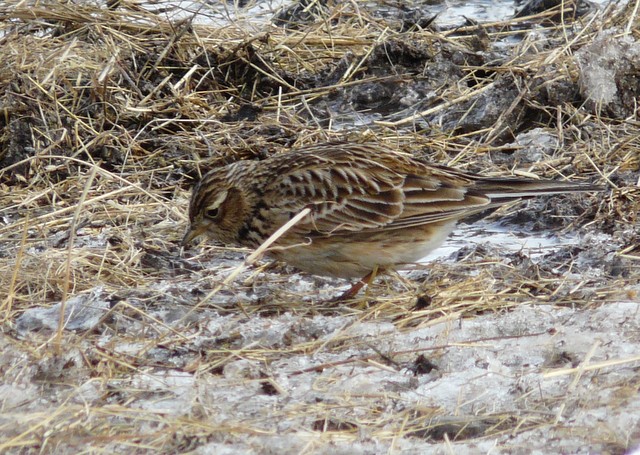Eurasian Skylark
A species of Skylarks, Also known as Japanese Skylark Scientific name : Alauda arvensis Genus : Skylarks
Eurasian Skylark, A species of Skylarks
Also known as:
Japanese Skylark
Botanical name: Alauda arvensis
Genus: Skylarks
Content
Description People often ask General Info
 Photo By sylvia duckworth , used under CC-BY-SA-2.0 /Cropped and compressed from original
Photo By sylvia duckworth , used under CC-BY-SA-2.0 /Cropped and compressed from original Description
The eurasian Skylark is a little different than other pipits. It has a chunkier body and does not wag its tail feathers. It prefers being in open areas like farmland and grassy meadows, but it is also present at airports. The small bird is famous for its displays in the air that include flying vertically.
Size
16 - 18 cm
Colors
Brown
Yellow
Gray
Life Expectancy
12 years
Nest Placement
Ground
Feeding Habits
Eurasian Skylark forages on the ground for seeds, young leaves, and insects, swallowing seeds whole. Insect intake increases in summer, highlighting seasonal dietary shifts.
Habitat
Eurasian Skylark are widely distributed across grasslands, farmlands, heathlands, moorlands, and steppes of Eurasia. They prefer open areas and are generally found in habitats without wooded areas or tall vegetation, such as cereal stubbles and coastal regions including beaches. These birds are adaptable to various altitudes, residing from sea level to mountainous regions reaching up to 2750 meters in the Caucasus and 3500 meters in the Sierra Nevada. The taiga and deserts mark the northern and southern limits of their range, respectively.
Nest Behavior
Eurasian Skylark engages in a song-flight display to mark territory and attract mates. Nest building by the female occurs in early spring.
Nest Characteristics
Eurasian Skylark's nest is a slight depression on the ground among short grass, lined with grass, rootlets, and sometimes animal hair. It has an inner lining of finer grass for insulation and comfort.
Dite type
Granivorous
People often ask
General Info
Feeding Habits
Bird food type
Sounds
Call
Recording location: Belgium
Song
Recording location: Belgium
Call
Recording location: Belgium
Song
Recording location: France
Distribution Area
This lark breeds across most of Europe and Asia and in the mountains of north Africa. It is mainly resident in the west of its range, but eastern populations are more migratory, moving further south in winter. Even in the milder west of its range, many birds move to lowlands and the coast in winter. Asian birds, subspecies A. a. pekinensis, appear as vagrants in Alaska. 
Species Status
Not globally threatened.
Scientific Classification
Phylum
Chordates Class
Birds Order
Perching birds Family
Larks Genus
Skylarks Species
Eurasian Skylark